Bram Stoker's Dracula (1992)
Directed by: Francis Ford Coppola
Written by: Bram Stoker, James V. Hart
Starring: Anthony Hopkins, Gary Oldman, Keanu Reeves, Winona Ryder
BRAM STOKER’S DRACULA [1992]
USA
AVAILABLE ON BLU-RAY AND DVD
RUNNING TIME: 127 mins
REVIEWED BY: Dr Lenera, Official HCF Critic
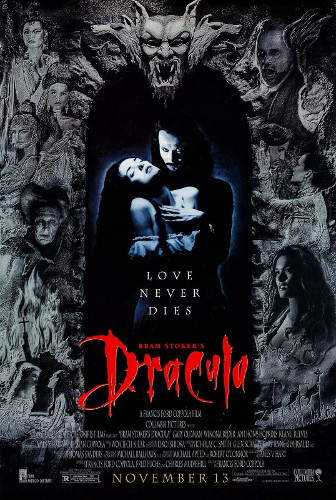
In 1462 Transylvnnia, Prince Vlad Dracula returns from a victory against the Turks to find his wife Elisabeta having committed suicide after receiving a false report of his death. A priest tells him that his wife’s soul is condemned for committing suicide. Enraged, Vlad renounces his faith and declares that he will rise from the grave to avenge Elisabeta with all the powers of darkness. In 1897, solicitor Jonathan Harker travels to Transylvania to arrange Dracula’s real estate acquisitions in London, including Carfax Abbey. Dracula sees a picture of Jonathan’s fiancée Mina Harker and believes that she’s the reincarnation of Elisabeta. Dracula leaves Jonathan to be attacked and fed upon by his brides, while he sails to England….
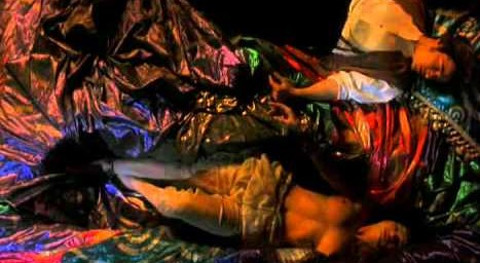
In the course of my considerable time at HCF, I’ve reviewed all the Universal and Hammer Dracula movies, plus a few others [you can say that I’m a fan], though for some reason I never got around to doing the most elaborate and expensive Dracula film until now, where I thought I’d take another look at it and write up what I thought. It seems to be liked and disliked with equal measure, though I loved it at the cinema and still love it now. It’s a glorious argument for the idea that nothing succeeds like excess, being over the top in most everything from direction to design to acting to virtually every scene having something strange going on or to look at in it. Director Francis Ford Coppola claimed that it was the first version to stick to the book, and as long as you ignore the BBC TV 1977 Count Dracula two-parter he was partly right: the 1970 Count Dracula did see Christopher Lee in a non- Hammer production which was fairly close to Bram Stoker, but Coppola’s film was far closer still, incorporating many bits previously unseen, though he almost hysterically heightened the sexual aspects, linked Dracula with the real-life Vlad the Impaler which Stoker didn’t do even if Vlad was an inspiration, and added the much-criticised ‘love and reincarnation’ aspect [probably first done in the 1932 version of The Mummy, though it was also in the 1973 TV Dracula, if to a far lesser extent]. Turning Dracula into a romantic anti-hero caused the Count to lose much of his bite in the opinion of many, ruining a creation who should be nothing but pure evil, though it’s worth remembering that Dracula still does much of his usual nasty stuff. It’s not as drastic as, say, when Andrew Lloyd Webber removed most of the horror from The Phantom Of The Opera and turned him into somebody very sympathetic.
James V. Hart’s script was turned down by most of the major studios, so for a while this was going to be a TV movie. Then Winona Ryder, trying to make up with Coppola after abandoning The Godfather Part 3, took the script to him. Liam Neeson was considered for, and very much wanted, the role of Professor Abraham Van Helsing, but after Anthony Hopkins showed interest, Neeson was turned down. At the first cast meeting, Coppola got all of the principal cast members to read the entire novel out loud to get a feel for the story, something which took several days. Due to delays and cost overruns on some of Coppola’s previous projects such as Apocalypse Now and One from the Heart, Coppola was determined to bring the film in on time and on budget, so he shot the whole thing on sound stages, getting an artist to storyboard the entire film first, then turning the drawings into a choppy animated film and added music, scenes from other films and paintings. Coppola wanted to have no optical or computer generated stuff, only effects done by on-set and in-camera methods. When his special effects team claimed that they couldn’t do what was required without using computers, Coppola fired them all and got his son Roman to do the effects. When Ryder struggled to ‘get into’ a scene in which she was required to writhe sexually, Oldman mouthed some ‘unrepeatable’ filthy stuff to her off camera. There were 38 different cuts of the film, employing three editors, before it was released to considerable commercial [though not so much critical] success, saving Coppola’s studio Zoetrope from bankruptcy.
The voice of Hopkins, who also appears in the opening portion as a priest, narrates, as we see how and why Vlad became Dracula. The battle shown with silhouetted figures against a red sunset is striking [and set to a musical motif reminiscent of the Hammer Draculas], but it’s only the first of many stunning visual moments. Then, Vlad stabbing a huge cross with his sword so that a huge amount of blood comes out is completely silly if you think about it, but lets us know that realism will never be a part of this movie, a movie where, for example, the laws of physics don’t work correctly whenever Dracula is around, so that his shadow can act independently, rats can run along a ceiling upside-down, and tears can become jewels. It’s bordering on the surrealistic, and quite a marvel seeing as all this in a big budget Hollywood studio effort. I can’t see it happening in Hollywood today somehow. After a quick intro to the fly-eating Renfield, who here was the first solicitor to visit Dracula a la the first Nosferatu, then to Lucy and her flirtatious friend Lucy, we go back to Harker via the first of the film’s great transitions as the eye of a peacock becomes a train tunnel – and let’s get the ‘bad’ out of the way now. The replication of the novel’s diary format where different characters relate stages of the story is a annoying device that doesn’t really work on film [or at least in this one] and which could easily be removed. But of course I’m more referring to Keanu Reeves, who I recently praised for his performance in John Wick 3: Parabellum, but who is bloody awful here, with his half-assed English accent, stiff acting and veneer of looking lost, though apparently he was exhausted after doing several films back to back so maybe we can cut him some slack – just a little. But it’s funny how so much of the deleted material on the Special Edition DVD is Reeves footage.
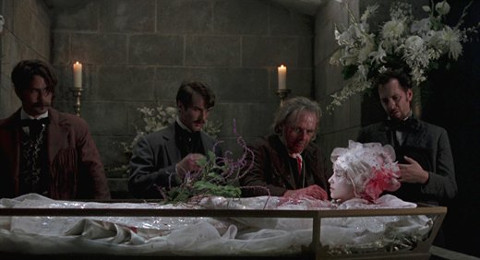
Harker at the castle is pretty much as the book [we even get to see the blue mist, the only time CGI was employed], though the scenes with the brides, who seem to materialise out of a rug in a eerily beautiful moment, frightening yet sexy, really go for the erotic aspect in a film where ‘70s euro exploitation cinema of the Jess Franco kind seems to cast a shadow even though I doubt that Coppola was actively using it as an influence. And we get the odd bit from one of the other Dracula films every now and again, like Oldman doing his own take on the famous, “I never drink….wine” and, “creatures of the night, what sweet music they make” bits immortalised by Bela Lugosi. The ‘Demeter’ ship sequence is quite brief, part of the first of several lengthy montages bound by the music score. Dracula turning from an old man to a younger one was done in the 1970 version, but that didn’t have Dracula become a werewolf who rapes Lucy – okay, it’s only shown very briefly, but I still recall being very surprised by it at the cinema. Things partly progress as you expect, but the introduction of Van Helsing is a surprise as he’s basically comic relief with his unintentional insensitivity [I love the way he warns his companions about Dracula with joy]. Hopkins is pure sliced ham and just great. And of course the love aspect crops up every now and again. Many find it corny or out of place, but I’m a sucker for this ‘love never dies’ stuff, and boy do Oldman and Winona Ryder have the right chemistry even if Ryder is almost as wooden as Reeves, and even though her and Oldman fell out during filming. Their main love scene, though not consisting of sex, should be silly what with all the stagey poses they do, but instead it’s not just erotic but exuding of the pain of really deep love, helped by that dark, agonising yet still romantic love theme that score composer Wojciech Kilar came up with. Of course all this means that things maybe aren’t as scary as they could be, though there’s quite a lot of blood. Supposedly the gore had to drastically cut down, though I’m not sure about that as surely we would have seen it by now, either in work prints or as deleted scenes?
Any narrative flaws tend to be from the book [Mina’s traveling to and from Transylvania seems to happen awfully fast], and the climax is the frantic action chase and fight that it should be [the 1970 kind of fluffed it], though we do pity Dracula. Isn’t this totally wrong? I can be a purist awfully often [Star Wars? There are only three], but in the case of Bram Stoker’s Dracula I tend to be having far too much fun taking everything in to be too bothered, be it Eiko Ishioka’s sometimes anachronistic yet somehow fitting costumes, to the parade of clever scene transitions, to the way one scene of Dracula walking about in London [yes, vampires can walk about in daylight] begins jerkily as if it was a really early film. Effects are often done the way he way they would have been in the very early days, and the results are often so good that this film deserves to be held up as one of the last great practical effect films before CGI took over and made the craft of special effects boring. Any sequences that would have typically required compositing were instead achieved by either rear projection or through multiple exposure. The startling Dracula demonic bat-thing turning into loads of rats is simply done by having the former retreat into shadow to be replaced by the latter – and it works a treat. Coppola seems to enjoy the familiar Gothic tropes, even though he’s said that the film was mainly a commercial exercise for him – and don’t get me started on Hart’s arrogant comments on Hammer films and the like.“Mr Hart, the film you scripted isn’t anyway near as far from those films as you think it is, and that’s a good thing”. The camp aspect really is full-on in this movie, even though Coppola probably prefers to use the term “operatic”. The two aren’t really as distinct as all that though of course.
Oldman is quite over the top, and in a very different manner from say Bela Lugosi, but he’s almost as hypnotic. There’s something rather – well – painful about his performance, evoking the agony of damnation and eternal life without your beloved. I still think that Christopher Lee and Klaus Kinski remain the top Draculas, but there really have been quite a few good ones. Tom Waits makes for a good Renfield too. I’ve mentioned Kilar’s score – which is quite minimalist but very interesting in its harmonies – three times already and it’s a major ingredient, by turns powerful and poignant, though the way one cue is sometimes placed on top of another [which was not intended by the composer] is odd, and doesn’t the ‘march’ theme sound rather like the Danny Elfman Batman theme? I suppose the main question is – do I think it’s the best version of Dracula? It’s probably the one I enjoy watching most, though I’d probably say that Terence Fisher 1958 [Hammer], and possibly F. W. Murnau 1922 and Werner Herzog 1979 achieved slightly more with a whole lot less [I’m less keen on John Badham 1979 even though it does one scene – the appearance of the vampiric Lucy – better than any other version, while Tod Browning 1931 is undeniably fascinating though hasn’t dated well]. But I don’t think that any Dracula or indeed horror fan has anything to be ashamed of in adoring this big studio, splashy, sometimes very silly [and proud of it] yet often gorgeous and rather poignant version.
Rating: 











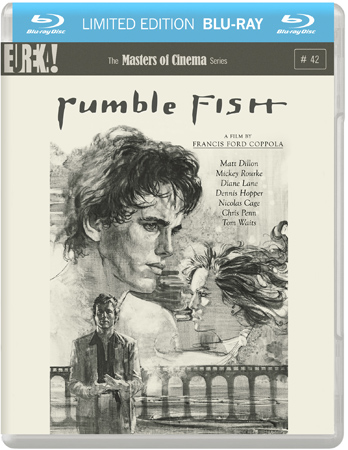
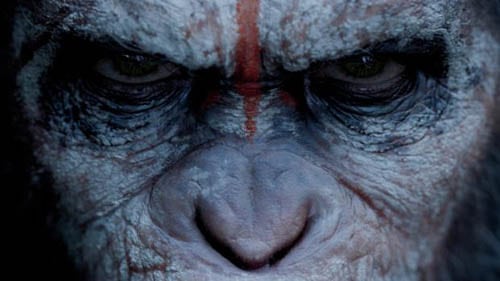
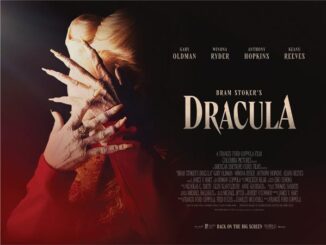
Be the first to comment